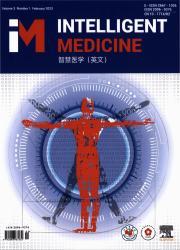基于Few-shot学习的结直肠癌组织病理图像分类
IF 6.9
Q1 COMPUTER SCIENCE, INTERDISCIPLINARY APPLICATIONS
引用次数: 0
摘要
结直肠癌是世界范围内的一种普遍和致命的疾病,对诊断提出了重大挑战。传统的组织病理学图像分类往往是低效和主观的。尽管一些组织病理学家使用计算机辅助诊断来提高效率,但这些方法严重依赖于广泛的数据和特定的注释,限制了它们的发展。为了解决这些问题,本文提出了一种基于少镜头学习的方法。方法采用迁移学习和对比学习相结合的小样本学习方法对结直肠癌组织病理图像进行良恶性分类。该模型包括特征提取、降维和分类模块,使用对比损失和交叉熵损失相结合的方法进行训练。在本文中,我们详细介绍了超参数:n-way, k-shot, β的设置,以及支持,查询和测试数据集的创建。结果我们的方法在每个类别35个样本的查询数据集上实现了98%以上的准确率,每个类别仅使用10个训练样本。我们记录了模型的损失、准确性和结果的混淆矩阵。此外,我们采用t-SNE算法来分析和评估模型的分类性能。该模型在准确性和最小的数据依赖性方面具有显著优势,在所有测试的n-way, k-shot场景中表现稳健。在包括1916个样本的综合测试数据集上,准确率始终保持在93%以上,证实了其较高的分类准确率和较强的泛化能力。我们的研究可以促进少针学习在医学诊断中的应用,并为将其扩展到处理罕见、难以诊断的病例奠定基础。本文章由计算机程序翻译,如有差异,请以英文原文为准。
Few-shot learning based histopathological image classification of colorectal cancer
Background
Colorectal cancer is a prevalent and deadly disease worldwide, posing significant diagnostic challenges. Traditional histopathologic image classification is often inefficient and subjective. Although some histopathologists use computer-aided diagnosis to improve efficiency, these methods depend heavily on extensive data and specific annotations, limiting their development. To address these challenges, this paper proposes a method based on few-shot learning.
Methods
This study introduced a few-shot learning approach that combines transfer learning and contrastive learning to classify colorectal cancer histopathology images into benign and malignant categories. The model comprises modules for feature extraction, dimensionality reduction, and classification, trained using a combination of contrast loss and cross-entropy loss. In this paper, we detailed the setup of hyperparameters: -way, -shot, , and the creation of support, query, and test datasets.
Results
Our method achieved over 98% accuracy on a query dataset with 35 samples per category using only 10 training samples per category. We documented the model’s loss, accuracy, and the confusion matrix of the results. Additionally, we employed the -SNE algorithm to analyze and assess the model’s classification performance.
Conclusion
The proposed model may demonstrate significant advantages in accuracy and minimal data dependency, performing robustly across all tested -way, -shot scenarios. It consistently achieved over 93% accuracy on comprehensive test datasets, including 1916 samples, confirming its high classification accuracy and strong generalization capability. Our research could advance the use of few-shot learning in medical diagnostics and also lays the groundwork for extending it to deal with rare, difficult-to-diagnose cases.
求助全文
通过发布文献求助,成功后即可免费获取论文全文。
去求助
来源期刊

Intelligent medicine
Surgery, Radiology and Imaging, Artificial Intelligence, Biomedical Engineering
CiteScore
5.20
自引率
0.00%
发文量
19
 求助内容:
求助内容: 应助结果提醒方式:
应助结果提醒方式:


